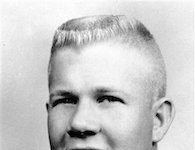On March 8, 1917, the female factory workers of Petrograd began striking and rioting in response to food shortages and government oppression. Other Petrograd residents soon joined in the demonstrations, which forced Czar Nicholas II to abdicate a week later.
Revolution Dethrones Czar Nicholas II
The Russian monarchy faced serious opposition in the early part of the 20th century. Czar Nicholas II was nearly overthrown in 1905 and his popularity again declined as the Russian army suffered embarrassing defeats in World War I.
“By 1917 the bond between the tsar and most of the Russian people had been broken,” explains Encyclopedia Britannica. “Governmental corruption and inefficiency were rampant. The tsar’s reactionary policies, including the occasional dissolution of the Duma, or Russian parliament, the chief fruit of the 1905 revolution, had spread dissatisfaction even to moderate elements.”
With resources committed to the war effort, the economy sputtered and there were widespread food shortages in the particularly cold winter of 1916-17. On March 8 (February 23 in the Julian calendar used in Russia), an International Women’s Day festival in Petrograd (St. Petersburg) gave way to strikes by female factory workers protesting food shortages. Students, industrial workers and others joined the protests.
The demonstrations grew in the ensuing days and became more political. Bolshevik leader Leon Trotksy described: “The slogan ‘Bread!’ is crowded out or obscured by louder slogans: ‘Down with autocracy!’ ‘Down with the war!’” Many troops and officers began to join the demonstrators. On March 15, having lost authority over the city, Nicholas ceded his throne to his brother, Grand Duke Michael Alexandrovich, who refused the throne.
A copy of Russian Tsar Nicholas’ decree of abdication, which he signed on March 15, 1917, is available.
Sources in this Story
- Encyclopedia Britannica: Russian Revolution of 1917
- Marxists.org: February Revolution
- The BBC: War and Revolution in Russia 1914-1921
The Provisional Government and the Bolshevik Revolution
Post-imperial Russia was governed by an alliance of the Provisional Government, made up of ministers from the Duma led by Georgy Lvov, and the Petrograd Soviet of Workers’ and Soldiers’ Deputies, made up of workers’ representatives.
The Provisional Government supported a continuation of the war, against the will of the Soviet and most Russian people. Alexander Kerensky, who replaced Lvov in July, led a disastrous offensive and faced a coup attempt by commander in chief Lavr Georgiyevich Kornilov, which weakened the already vulnerable government.
Bolshevik leader Vladimir Ilyich Lenin led the opposition to the Provisional government. Though a coup in July failed, Lenin led a successful coup in November (October in the Julian calendar). The Bolsheviks instituted socialist rule, placing the country’s banks, factories and farms under government control.
The Bolshevik Revolution, or October Revolution, was the second part of the Russian Revolution, which saw the Russian monarchy replaced by the Communist Bolsheviks, who formed the Soviet Union in 1922 after a Civil War against conservative factions.
The Fate of the Czar
Czar Nicholas II and his immediate family were executed in July 1918 by Bolshevik forces in the cellar of Ipatiev House in Ekaterinburg, ending the Romanov dynasty.
In 2012, we published this article about this historic event on the New York Times Learning Network. This article connected the event to current issues and offered reflection questions to help the reader think about its relevance today.











